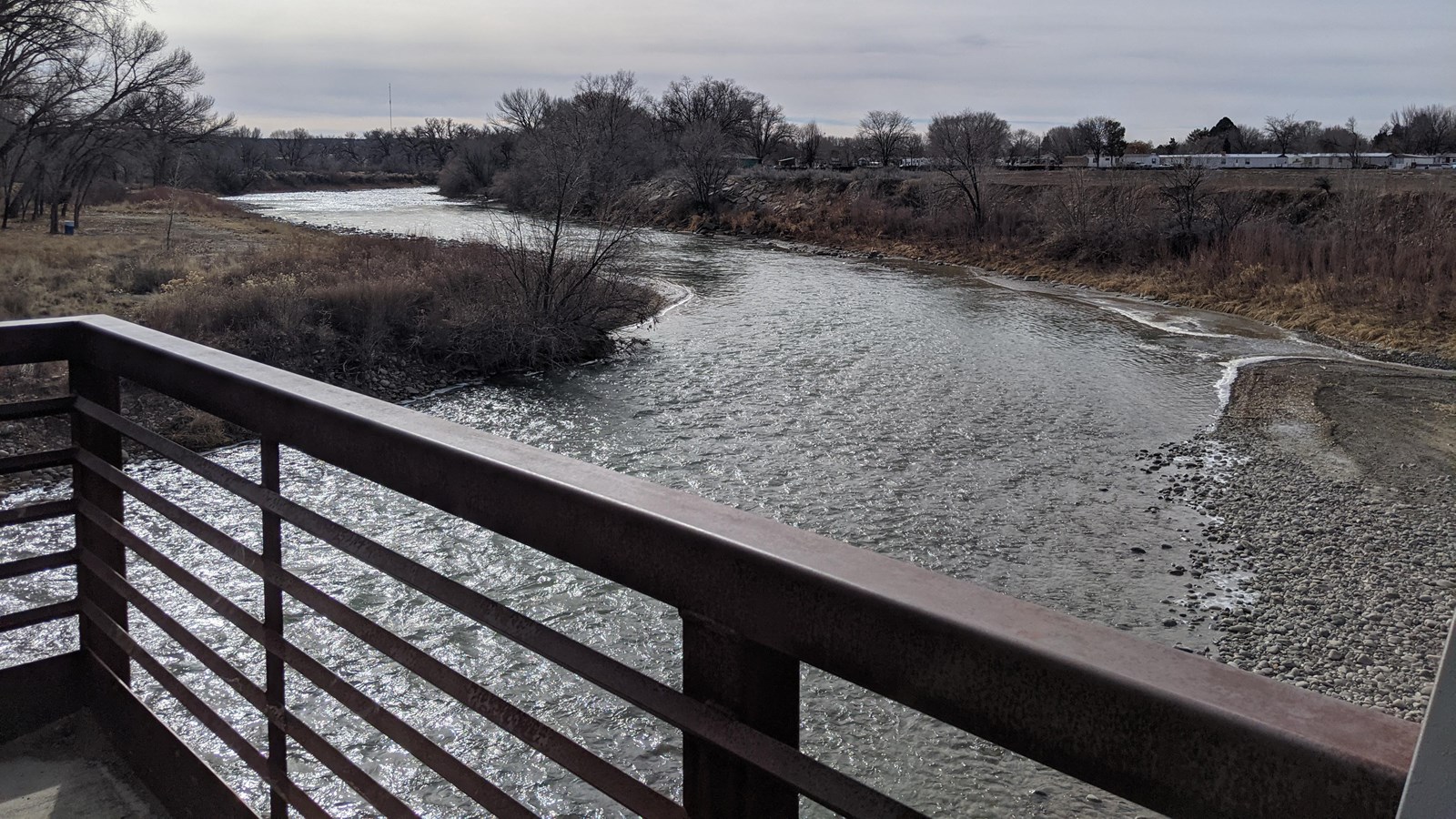Last updated: October 6, 2022
Place
Old Spanish Trail Retracement at Aztec Ruins

NPS Photo
Historical/Interpretive Information/Exhibits, Wheelchair Accessible
On the evening of November 17, 1829, Antonio Armijo and his caravan of about 60 men and 100 mules crossed Las Animas River at a shallow point near here and made camp. Armijo and his men were just beginning their journey on what would later be called the Old Spanish Trail. Pack mule caravans and travelers used the Old Spanish Trail as a trade route between Santa Fe, New Mexico, and Los Angeles, California, which were part of Northern Mexico at the time.
The Old Spanish Trail was only used during a couple of decades in the 19th century, it evolved as a combination of the indigenous footpaths that were used for centuries prior, early trade and exploration routes, and horse and mule trails across the region. The overland route was necessary to build the trade between New Mexico and California; to build the strong trade network of woolen goods of New Mexico exchanged for the horses and mules from California. This was happening at the same time as the trade of contraband goods and enslaved Native Americans.
After the end of the Mexican American War in 1848, the United States took control of most of the Southwest. New overland routes were established, and a wagon route was opened to southern California, and use of the Old Spanish Trail sharply declined.
Site Information
Location (Aztec Ruin National Monument, San Juan County New Mexico (36.8327, -107.9956))
Available Facilities
The Visitor Center has accessible restrooms, museum and informtion, picnic area, walking trails and a hertiage garden.
Safety Considerations
